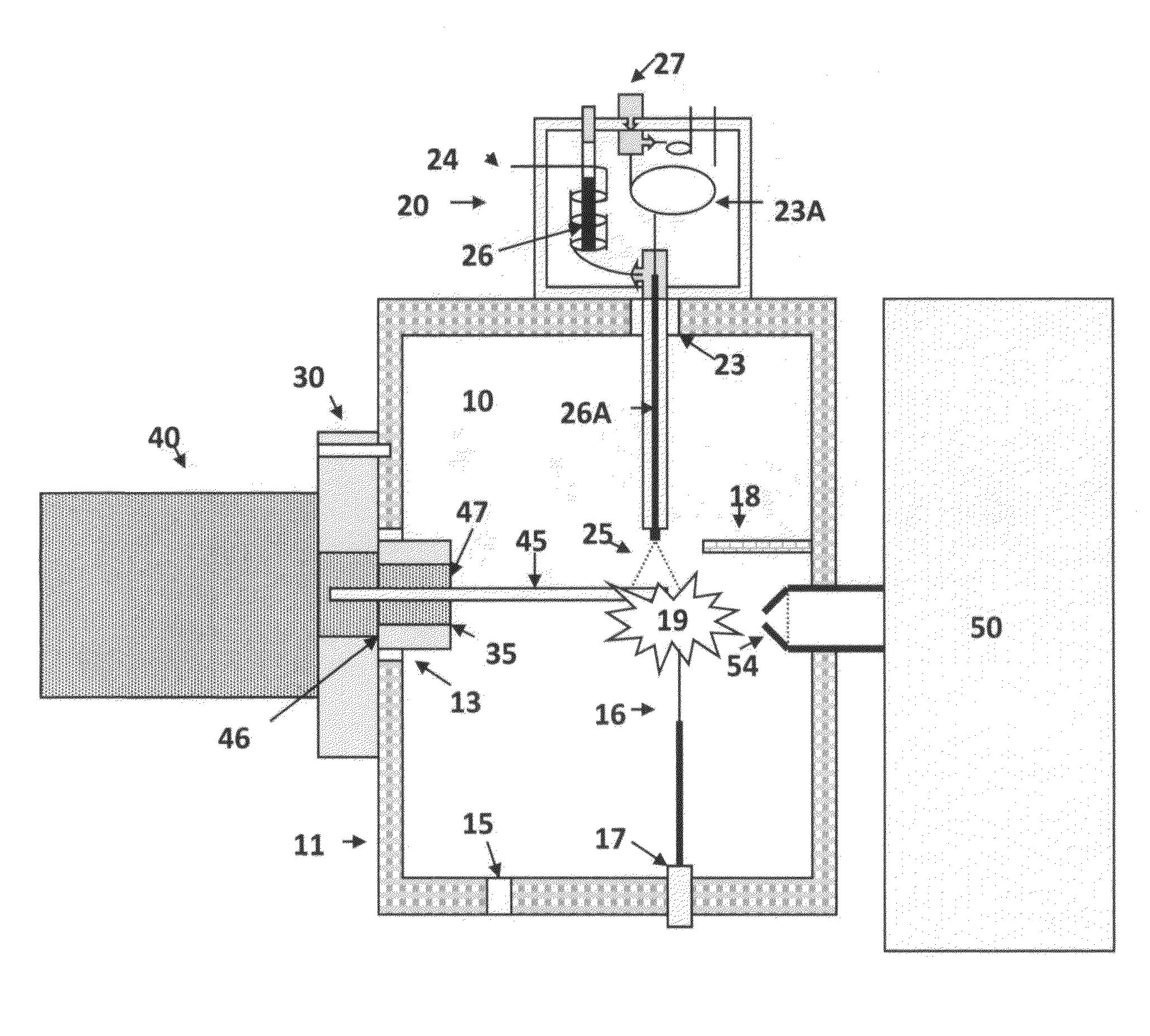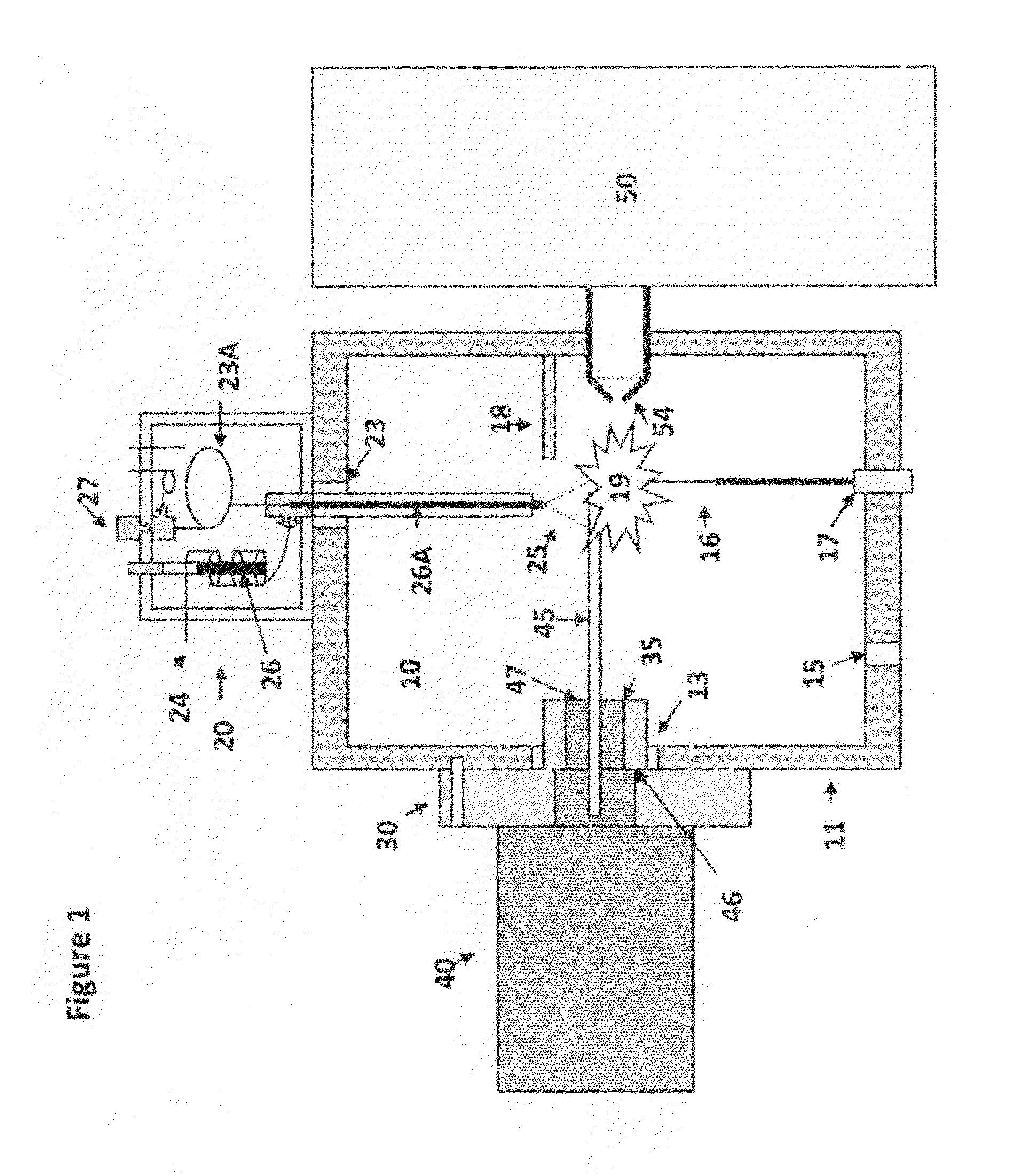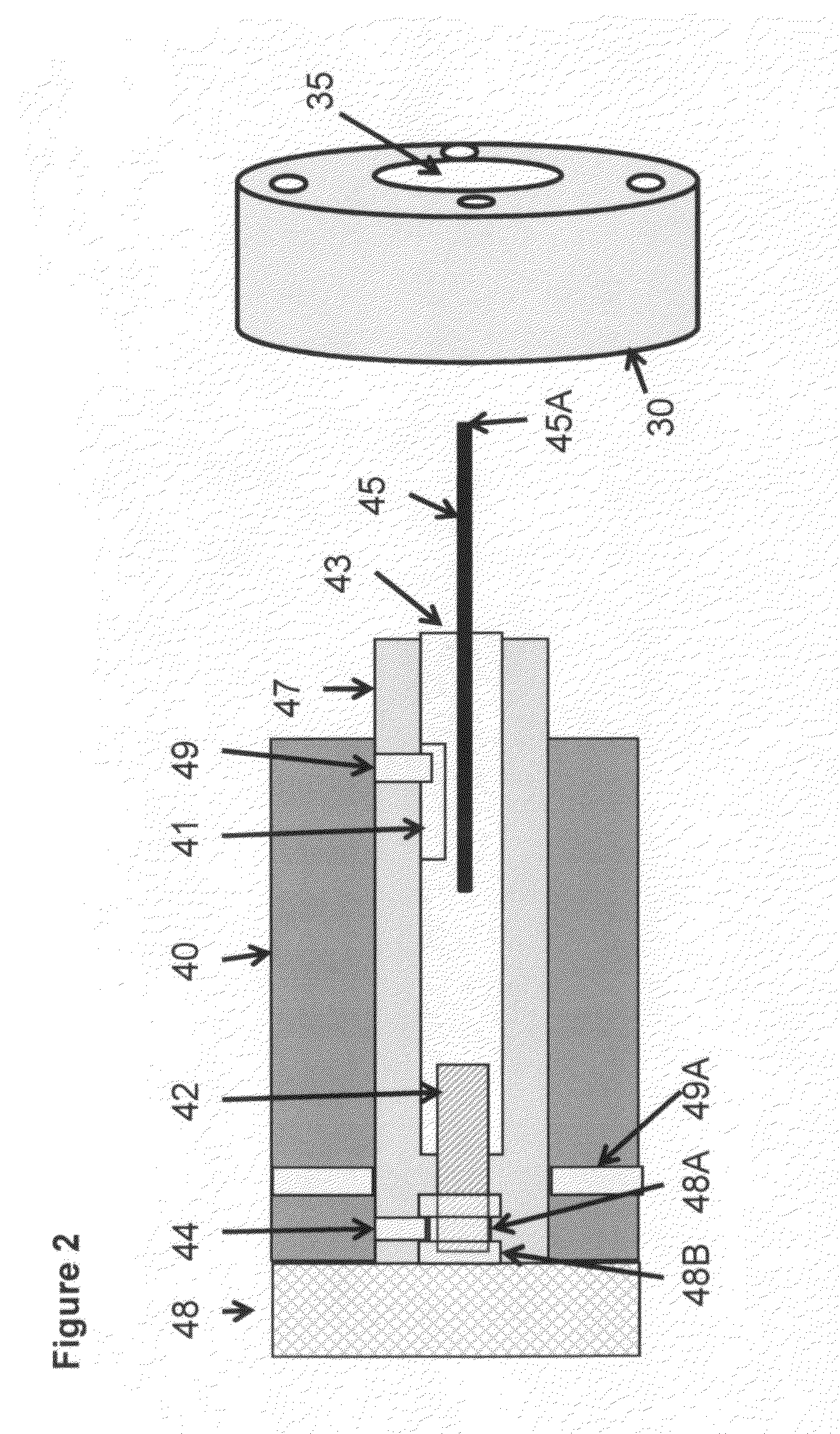Atmospheric pressure ion source probe for a mass spectrometer
a mass spectrometer and atmospheric pressure ion source technology, applied in the field of atmospheric pressure ion source, can solve the problems of lack of flexibility of atmospheric pressure ionization mass spectrometers (apims) instruments currently available, further small droplets are formed, etc., and achieve the effect of greater efficiency and sensitivity
- Summary
- Abstract
- Description
- Claims
- Application Information
AI Technical Summary
Benefits of technology
Problems solved by technology
Method used
Image
Examples
Embodiment Construction
[0073]An embodiment of the present invention of interfacing a direct introduction solids / liquid probe to an AP-LC / MS instrument is shown in FIG. 1. FIG. 2 shows a sectional view, in greater detail, of the solids / liquid probe and interface flange of the earlier figure. FIG. 3 shows an alternative embodiment of the ion source shown in FIG. 1 and FIG. 4 shows an imaging configuration. FIG. 5 shows an application of the solids / liquid API probe.
[0074]FIG. 1 shows an atmospheric pressure ionization source 10 comprising an enclosure or housing 11, and a flange 30 for interfacing and associated solids / liquid direct introduction probe 40 to an associated mass spectrometer 50. The mass spectrometer has an entrance aperture 54, also known as a skimmer aperture, which is surrounded by the housing 11. The ionization source 10 comprises at least one port 13 for receiving the flange 30. An electrode 16, supported by an electrically insulating sleeve 17, is mounted on the enclosure 11. The electrod...
PUM
 Login to View More
Login to View More Abstract
Description
Claims
Application Information
 Login to View More
Login to View More - R&D
- Intellectual Property
- Life Sciences
- Materials
- Tech Scout
- Unparalleled Data Quality
- Higher Quality Content
- 60% Fewer Hallucinations
Browse by: Latest US Patents, China's latest patents, Technical Efficacy Thesaurus, Application Domain, Technology Topic, Popular Technical Reports.
© 2025 PatSnap. All rights reserved.Legal|Privacy policy|Modern Slavery Act Transparency Statement|Sitemap|About US| Contact US: help@patsnap.com



